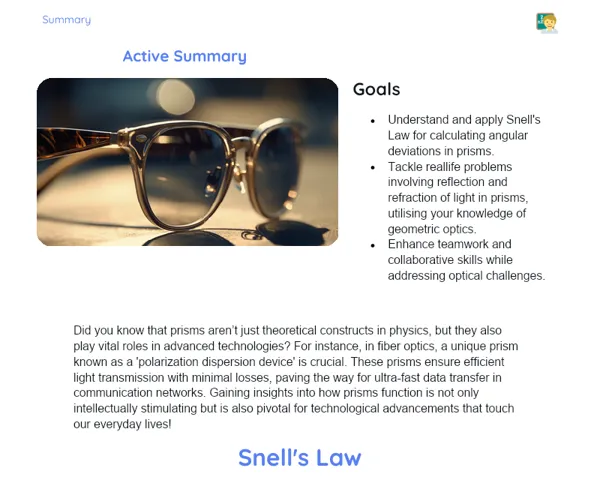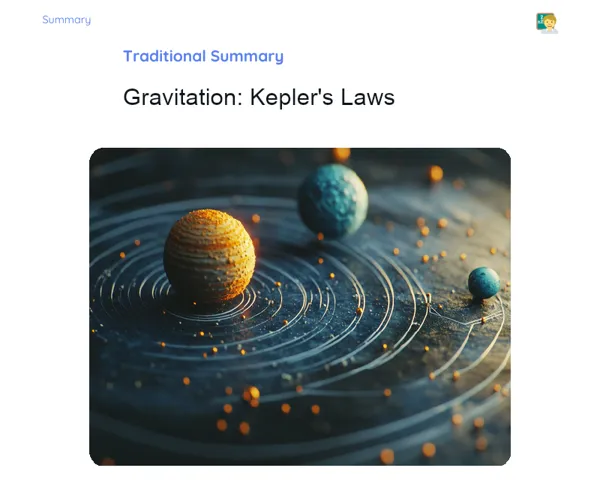Summary Tradisional | Statics: Rigid Body
Contextualization
The statics of rigid bodies is a crucial concept in physics that impacts various everyday aspects in our lives. Think about structures such as buildings, bridges, or even the furniture in your home. For these items to stay stable and safe, it’s important that all the forces and moments acting on them are in equilibrium. This implies that the total of all forces and the total of all moments (torques) must balance out to zero, ensuring that the object does not shift or deform. These principles play a significant role in civil engineering and architecture, helping professionals design and construct safe and enduring structures.
Engineers and architects apply these static concepts to confirm that their buildings not only carry their own weight but are also capable of withstanding external forces, including wind, earthquakes, and the loads from people and vehicles. For instance, while designing a bridge, it’s crucial to calculate how forces are distributed throughout the structure to prevent any chance of collapse. Similarly, while constructing a building, it’s necessary to make sure the structure can bear all applied loads while maintaining static equilibrium. These meticulous calculations are vital for ensuring the safety and efficacy of constructions.
To Remember!
Static Equilibrium
Static equilibrium is when a rigid body stays at rest or moves uniformly without rotating, because there are no resultant forces and moments acting on it. For a body to be in static equilibrium, two conditions need to be fulfilled: the total of the forces applied to the body has to be zero (ΣF = 0), and the total of the moments (or torques) has to also be zero (ΣM = 0). Meeting these conditions guarantees that the body won't move in a straight line or spin.
The first condition, ΣF = 0, speaks to translational equilibrium. This means that the forces pulling or pushing on the body in various directions cancel each other out. For example, if a rigid body is pulled with equal force in opposite directions, it stays in place. The second condition, ΣM = 0, pertains to rotational equilibrium. This indicates that the moments that cause the body to rotate around any point must also balance out. For instance, if two equal and opposing forces act in different directions but not along the same line, they generate a moment that can cause the body to rotate.
Understanding and applying these conditions is vital in engineering and architecture, as they play a key role in designing stable and safe structures. By ensuring that all forces and moments are balanced, engineers can foresee and avert structural failures. Grasping these concepts is essential for tackling practical statics issues, such as figuring out the forces in a bridge beam or the moments in a construction beam.
-
Static equilibrium requires that ΣF = 0 and ΣM = 0.
-
The sum of forces ensures translational equilibrium.
-
The sum of moments ensures rotational equilibrium.
Forces and Moments
Forces are interactions that can trigger acceleration or deformation in a body. They are vector quantities, meaning they possess both magnitude and direction. In statics, forces are key in ascertaining the equilibrium state of a rigid body. There are several force types, such as contact forces (like normal and frictional) and non-contact forces (including gravitational and magnetic).
Moments, or torques, are derived from the applied force and the perpendicular distance from the force's action point to the point of rotation. They are responsible for making a body rotate around a specified point or axis. Understanding moments is essential for examining rotational equilibrium. For example, when using a screwdriver, the force applied to the handle generates a moment that rotates the screw.
To solve statics challenges, it’s important to know how to calculate and balance forces and moments. This can be achieved by drawing free body diagrams (FBDs) to illustrate all forces acting upon a body and employing the static equilibrium conditions. A thorough analysis of forces and moments enables predictions about a structure's behavior, ensuring its stability.
-
Forces are vectors with magnitude and direction.
-
Moments are the product of force and perpendicular distance.
-
Forces and moments are fundamental for static equilibrium.
Center of Gravity
The center of gravity of an object is the point at which the force of gravity can be viewed as acting. For homogeneous and symmetrical objects, the center of gravity aligns with the geometric center. However, for irregular objects or those with uneven mass distributions, the center of gravity might be outside the object itself.
Understanding the center of gravity is critical for equilibrium analysis. In a body at equilibrium, the center of gravity needs to align with the line of action of the support force. For instance, when you're balancing a stick on your finger, the point where it balances is its center of gravity. If the stick shifts from this balance point, it will topple due to the moment created by gravity.
In engineering and architecture, the position of the center of gravity can greatly affect the design and stability of structures. Buildings and bridges must be designed so that their centers of gravity are optimally placed to prevent collapses. Therefore, accurately computing the center of gravity is a vital aspect of structural design.
-
The center of gravity is where the force of gravity acts.
-
For uniform bodies, it coincides with the geometric center.
-
It has a significant impact on the design and stability of structures.
Free Body Diagrams (FBD)
Free Body Diagrams (FBDs) are visual representations showcasing all the forces acting on a particular body. They are vital tools for analyzing statics problems as they help in visualizing and resolving forces and moments. To draw an FBD, you isolate a body from its surroundings, representing all external forces and moments acting on it as vectors.
FBDs assist in identifying contact forces, like normal and frictional forces, as well as non-contact forces like gravity. They also prove useful in applying static equilibrium conditions (ΣF = 0 and ΣM = 0). In addressing a statics problem, generating the FBD is the initial step to organize the information and outline necessary equations to find unknown forces.
In the fields of engineering and architecture, FBDs are employed to analyze the stability of structures and their components. For example, while designing a support beam, an engineer will draft an FBD to establish the reaction forces at the supports and ensure that the beam remains in equilibrium. This analysis is crucial for confirming that the structure can bear the loads applied without failing.
-
FBDs illustrate all forces acting on a body.
-
Essential for applying static equilibrium conditions.
-
Used to analyze the stability of structures and their components.
Key Terms
-
Static Equilibrium: Condition where the sum of forces and moments acting on a body equals zero.
-
Force: Interaction that can lead to acceleration or deformation of a body, characterized by magnitude and direction.
-
Moment: Product of the applied force and the perpendicular distance to the rotation point, causing rotation.
-
Center of Gravity: The point at which the force of gravity acts on a body.
-
Free Body Diagram (FBD): A graphical illustration showing all the forces acting on an isolated body.
Important Conclusions
In this lesson, we delved into the fundamental principles of statics as they apply to rigid bodies, underscoring the essential conditions for maintaining static equilibrium. We discovered that for a rigid body to remain stationary, the total of the forces and moments acting upon it must equal zero. These concepts were exemplified through practical scenarios, such as the stability of bridges and buildings as well as the relevance of the center of gravity and free body diagrams in analyzing various forces and moments.
Moreover, we discussed the significance of statics knowledge in engineering and architecture, where these principles are crucial for ensuring the safety and stability of various constructions. Engineers rely on them to design structures capable of withstanding diverse loads and external forces, preventing failures and collapses. Grasping concepts related to forces, moments, and centers of gravity is vital for effectively addressing practical challenges and ensuring the integrity of structures.
Lastly, the lesson highlighted the use of free body diagrams for identifying and resolving forces acting on a body. This tool is instrumental in organizing information and applying equilibrium conditions, allowing for refined analysis of statics scenarios. Enhancing your comprehension of these concepts will enable students to navigate more complex challenges in physics and engineering, solidifying their expertise in the field.
Study Tips
-
Review practical examples discussed in class and attempt to solve similar problems independently. This will reinforce your grasp of static equilibrium concepts.
-
Employ free body diagrams to visualize the forces at play in different situations. Practicing drawing these diagrams will help you pinpoint and resolve statics issues.
-
Explore additional resources on statics and the equilibrium of rigid bodies, like physics textbooks and engineering articles. Supplementing your studies with varied sources can provide fresh insights and deepen your understanding.



